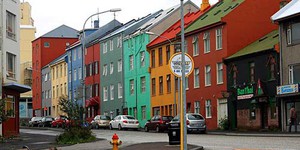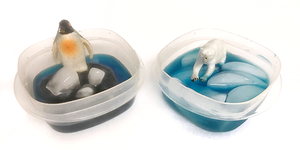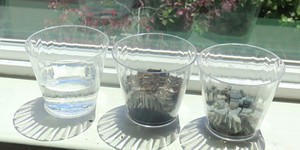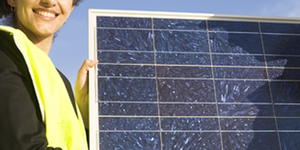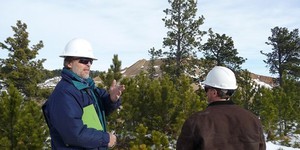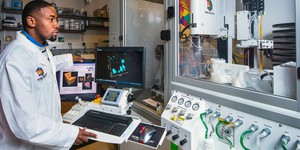Summary
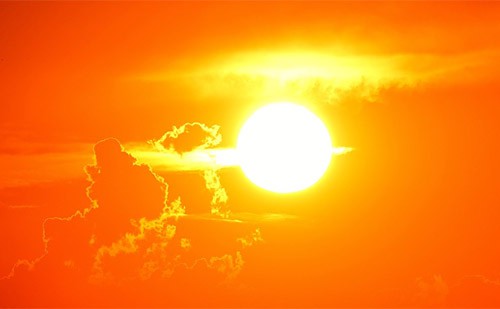
Introduction
Have you ever walked across a large parking lot on a sunny day and felt like you were roasting? That's because the asphalt gets really hot in the sun! Streets, buildings, and parking lots can get so hot that they raise the average temperature of urban areas by a few degrees. Do you think natural materials also heat up in the sun, or only man-made materials? Do this activity to find out!
Materials
- Sunny day
- Partially shaded area outside with at least two different ground covers (dirt, grass, rocks, concrete, etc.)
- Wire
Instructions
- Find a line on the ground where an area in the sun meets an area in the shade. Place your wire on this line. Then, find a spot where you can take a big step into the shade and take this step.
- Find a spot in the sun where Earth is covered with the same material. Choose one that is at least one big step away from a shaded area.Does the spot in the sun look different compared to the spot in the shade? Why do you think this is the case? Do you think these spots will feel different too?
- Touch both places with your hand and compare how they feel.Does one feel warmer than the other? If so, which one feels warmer? Why would this be the case?
- If it is possible and you have permission, dig up about one inch of surface material and feel the layer beneath it. This may not work in some locations or with some materials (e.g. you shouldn't dig holes in a public park, and you can't dig holes in concrete).For the material in the sun, do the surface and the layer underneath feel similar, or is one warmer? Do you note the same findings for the material in the shade?
- Find a different material: one spot where Earth is covered with this material in the shade and one in the sun. Repeat previous steps with this material.
- If you can, repeat this investigation with a third material: include water, soil or another natural material!Do you see a pattern? Why would this happen?
- Go back to the wire you placed at the edge of the shade. Can you see how the edge of the shade moved? If it hasn't moved, wait 10 minutes and then come back.Why would the edge of the shade move?
- Depending on which way the shadow moved, you now have a new area in the shade that was recently in the sun, or vice versa. Investigate how this area looks and feels, compared to areas that have been in the sun or the shade for a long time.
What Happened?
Did the materials look brighter and lighter in the sun? Did they also feel warmer? That is expected.
Our Sun radiates light to Earth. When this light hits soil, pebbles, grass, cement, or any other material that covers Earth, part of it bounces back. This reflected light makes the material look brighter and lighter. The other part of the light gets absorbed or sucked into the material and warms up its surface. That is why materials in the sun feel warmer when you touch them. As warm materials heat up the air surrounding them, the area around them starts to feel warmer, too.
Maybe you noticed that when the sun initially shone on a material, it became just a little bit warmer, and after a while became much warmer. Warming is a process that takes time, just as when a material in the sun moves to the shade, it cools down gradually.
Digging Deeper
The Sun is about 93 million miles (150 million kilometers) away, but because the Sun's surface is so hot (about 10,000°F), we on Earth can still benefit from the light it radiates. Without it, humans could not survive on Earth. The light radiated by our Sun carries energy. When it reaches a surface, part of it gets absorbed and transformed into heat. That is why places in the sun feel warmer than places in the shade. Another part of the light gets reflected. That part makes surfaces look lighter and brighter in the sun.
Earth is covered with water (about 70%!), soil, rocks, snow and ice, and a wealth of man-made materials like concrete. When these surfaces are exposed to the sun, they warm up. This process takes time, and some materials like water need more light from the sun to warm up a few degrees than others, like soil or rocks. Once warmed, these surfaces release heat, which warms up the air above them. Again, this process is gradual, and some materials like water hold onto heat longer than others like soil or rocks. This difference generally makes the temperature of coastal climates more moderate than those of inland climates, but other natural factors like trees and plants moderate the air temperature too. Plants absorb water from the ground and transpire (release water into the air), which works like a natural air conditioner.
Many factors determine how much materials heat up in the sun and how they release this energy. Some materials like cement, dark rocks, or even sand can get very hot when left in the sun for a while. Water warms up too, but it needs to stay in the sun longer to warm up by the same amount, and it cools down slower than soil or cement, too. In this activity, you tested some materials yourself.
Ask an Expert
For Further Exploration
- If you found a pattern, test it on more materials the next time you are in the park, at a playground, or an outdoor sports field—or repeat the procedure inside. Do the same differences occur? Why or why not?
- Place cups of water, dirt, and/or pebbles in the shade, and identical cups in the sun. Investigate how the materials in the sun look and feel compared to those in the shade. Note that you cannot compare the temperatures of two different materials (e.g. rocks and dirt) by feeling them with your hands, as different materials at the same temperature can feel very different. You can compare the same materials placed in the sun and shade or use an infrared thermometer to compare the surface temperature of different materials.
- Try to find out if there is a correlation between color and how much a material warms up when placed in the sun. Do dark soil or pebbles warm up more than, less than, or by the same amount as light colored soil or pebbles? What about darker and lighter colored cement?
- Find information on urban heat island, and how cities try to combat it. Can you design a small-scale test to investigate if their ideas work?
Related Resources
Project Ideas
Activities
Lesson Plans
- K-PS3-1. Make observations to determine the effect of sunlight on Earth's surface.



